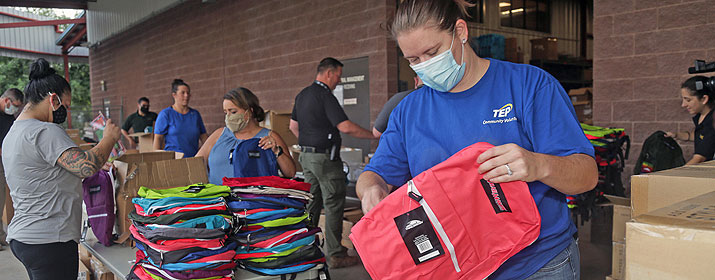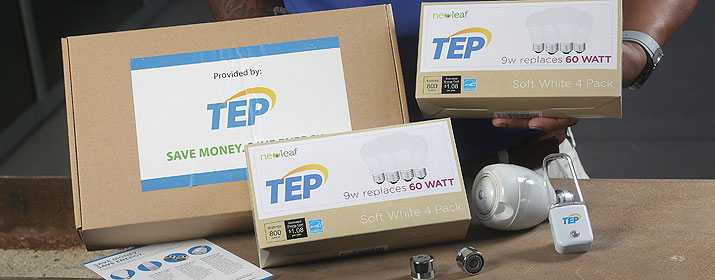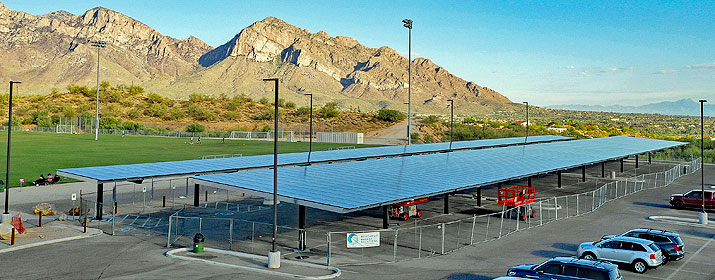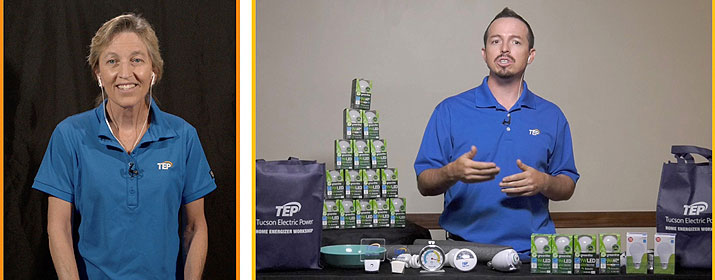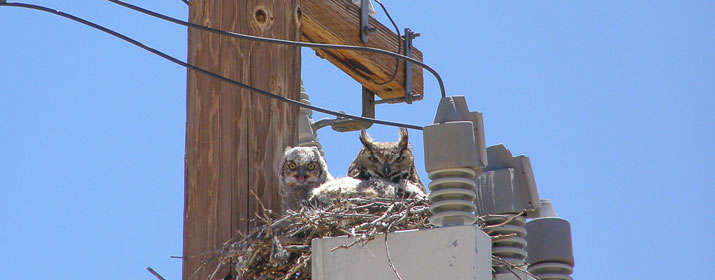
Have you ever seen a bird of prey on a utility pole and wondered, “Is that bird safe?”
We’ll help answer that question in a new online presentation below that outlines a partnership designed to protect raptors. Tucson Electric Power (TEP) and the University of Arizona (UA) have worked together for more than 20 years in a program that combines research, safety and environmental stewardship.
The 36-minute presentation details how we safeguard electrical equipment to protect raptors of concern, such as Harris’s Hawk, the Great Horned Owl and the Red-Tailed Hawk. These large-bodied birds have a much longer wingspan than smaller species, such as the American kestrel, making them more susceptible to electrical hazards as they perch, hunt, nest and socialize.
The presentation also features experts from the Arizona-Sonora Desert Museum, who will introduce you to Bowie, the Red-Tailed Hawk, and Tiger, the kestrel, as you learn about the hunting and nesting habits of raptors.
To protect these magnificent birds, TEP adds insulating components to make overhead electric distribution equipment safer. All new facilities include these features, but we also add protective gear to older equipment near active nesting sites or in areas with heavy bird activity.
“One of the benefits of this partnership has been having the research data from the university that helps drive progress and ensures that what we’re doing is working,” said Larry Weigel, a Transmission Distribution Supervisor in the Outside Services Department. Weigel co-manages the Raptor Protection Program with Supervisor Jessica Hayes.
The research shows that properly installed bird guards on equipment in the vicinity of active raptor nest sites and high activity areas significantly reduces electric hazards to raptors.
The presentation also features University of Arizona Research Assistant Starlight Noel-Armenta from UA’s School of Natural Resources and the Environment. The school received the Environmental Protection Partner Award from TEP in 2019 for its longstanding partnership with TEP.
“We know our customers care about the animals that make our desert so special,” Hayes noted. “Now they can learn more about how we protect them in this convenient video. We don’t even mind being upstaged a little by the stars of the show, Tiger and Bowie.”
The program is an example of how cooperative teamwork can make a difference in protecting Southern Arizona’s majestic raptors, Weigel said. Want to join the team? Here’s how you can help:
- Report active raptor nest sites or injured animals near utility poles. Please email us or call TEP Customer Care at 520-623-7711.
- Do not feed or approach wildlife. This can change their behavior in ways that make them more vulnerable. Animals are often injured or killed when they spend more time around roads, parking areas, and utility poles. They are also easier for predators to catch in these open areas.
- Volunteer and visit to learn more about raptors and other desert animals through these organizations:
- Watch other videos of our work protecting raptors:



